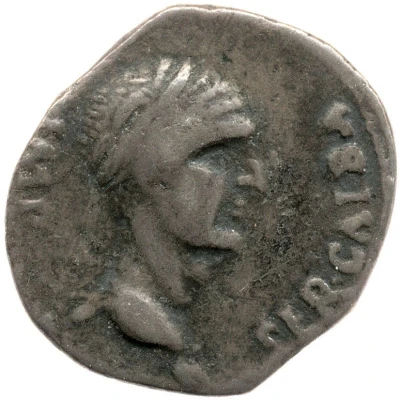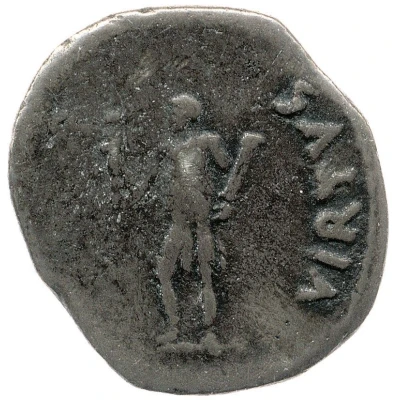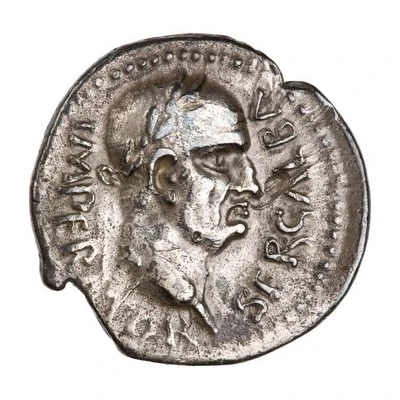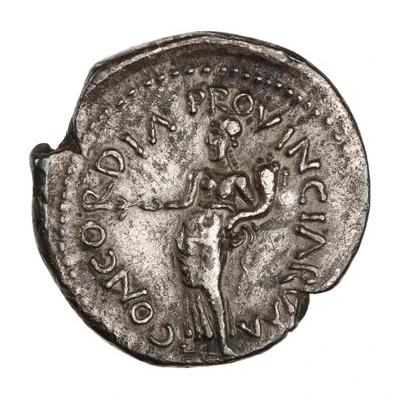


© Trustees of the British Museum
Denarius - Galba VIRTVS; Virtus and Victory
| Silver | 3 g | 17 mm |
| Issuer | Rome › Roman Empire (27 BC - 395 AD) |
|---|---|
| Emperor | Galba (Servius Sulpicius Galba) (68-69) |
| Type | Standard circulation coin |
| Years | 68-69 |
| Value | 1 Denarius |
| Currency | Denarius, Reform of Augustus (27 BC – AD 215) |
| Composition | Silver |
| Weight | 3 g |
| Diameter | 17 mm |
| Shape | Round (irregular) |
| Technique | Hammered |
| Demonetized | Yes |
| Updated | 2024-10-05 |
| Numista | N#244854 |
|---|---|
| Rarity index | 100% |
Reverse
Virtus, in military dress, standing left, holding Victory on globe in right hand and parazonium in left
Script: Latin
Lettering: VIRTVS
Translation:
Virtus
Virtue.
Comment
Mass varies: 2.95–2.98 g;Source: Online Coins of the Roman Empire (OCRE)
Münzkabinett, Staatliche Museen zu Berlin (CC BY-NC-SA 4.0)
Interesting fact
The Denarius - Galba coin was minted during the reign of Emperor Galba, who ruled the Roman Empire from 68 to 69 AD. The coin's design features the goddess Virtus (Virtue) on the obverse (front side), and the goddess Victory on the reverse (back side). The coin's silver content and weight of 3 grams made it a valuable and widely used currency during its time. Interestingly, the Denarius - Galba coin was also used as a tool for propaganda by Emperor Galba, who wanted to promote his image as a strong and virtuous leader. The coin's design and inscriptions, such as VIRTVS (Virtus) and VICTORIA (Victory), were meant to convey the message that Galba's rule was marked by virtue, strength, and victory. Overall, the Denarius - Galba coin is a fascinating piece of history that provides insight into the political and economic systems of ancient Rome, as well as the propaganda techniques used by its rulers.

